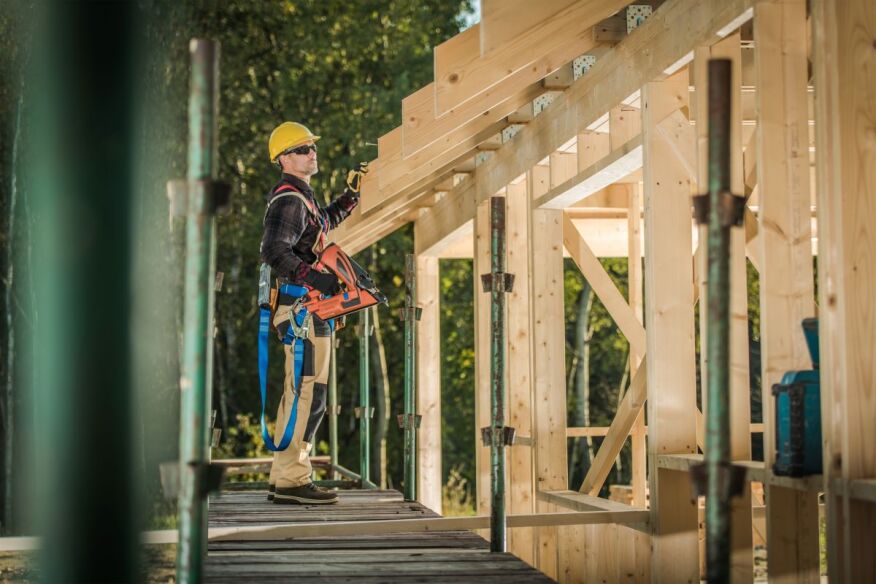
Nail guns or pneumatic nailers are responsible for an estimated 25,000 work-related emergency room visits each year, according to the NAHB. “Nail guns are used every day on many construction jobs,” says Kimberly Darby at the Occupational Safety and Health Administration's (OSHA) Office of Communications. “They boost productivity but also cause tens of thousands of serious injuries each year.”
The NAHB lists many hazards that come with using nail guns which includes unintended nail discharge from double fire; unintended nail discharge from knocking the safety contact with the trigger squeezed; nail penetration through lumber work pieces; a nail ricochet after hitting a hard surface or metal; bypassing safety mechanisms; not disconnecting the air supply when the nail gun is unattended; and allowing the air hose to become a tripping hazard. OSHA also notes missing the work piece or awkward nailing position as potential hazards.
To better protect workers, there are six practical steps for builders on jobsites where nail guns are being used, which Darby shares below:
1) Use full sequential trigger nail guns. As the safest type of nail gun, the trigger will only fire a nail when controls are activated in a sequential order. This usually entails pressing the nail gun into the work piece before pulling the trigger.
2) Provide training. For new users or workers who are unfamiliar with a certain model, it is important to review the manufacturer’s instructions and labels for the nailer as well as provide hands-on trailing .
3) Establish nail gun work procedures. Procedures can include inspecting the tool before each use, always assuming the nail gun is loaded, and never walking around with a finger on the trigger. Operations can be set up so that workers are not in the line of fire from nail guns and that hands are always at least 12 inches away from nailing points.
4) Provide personal protective equipment (PPE). At no cost to employees, PPE such as safety glasses, hard hats, and ear protection are recommended for nail gun use and should be provided by the employer. Safety shoes, which are typically required by OSHA on residential construction sites, can protect workers’ toes.
5) Encourage reporting and discussion of injuries and close calls. If a mishap occurs, it is in the worker’s best interest to share the accident or near accident with his or her team. Co-workers will be more aware of potential hazards and learn to avoid them. Reporting can also ensure that an employee gets medical attention if needed.
6) Provide first aid and medical treatment. In the event of an injury, the employer should seek medical attention for the worker OSHA advises, even if it appears to be minimal. Nail strip glue, plastic, or even clothing can get embedded in the injury and lead to infection. If a nail is removed incorrectly, barbs of the nail can also cause secondary injury.
In January 2023, the U.S. Department of Labor announced cost-of-living adjustments to OSHA civil penalties for 2023. Maximum penalties for violations increased from $14,502 per violation to $15,625 per violation. For willful or repeated violations, the maximum penalty increased from $145,027 per violation to $156,259 per violation. The top five OSHA violations for 2022 included fall protection general requirements, hazard communication (chemicals), respiratory protection, ladders, and scaffolding.










